|
| Recent Posts | - April, 2025-4,(1)
- January, 2025-1,(1)
- July, 2024-7,(1)
- May, 2024-5,(2)
- May, 2023-5,(1)
- February, 2023-2,(1)
- November, 2022-11,(1)
- July, 2022-7,(2)
- March, 2022-3,(1)
- November, 2021-11,(2)
- August, 2021-8,(2)
- July, 2021-7,(2)
- June, 2021-6,(1)
- May, 2021-5,(1)
- March, 2021-3,(1)
- February, 2021-2,(2)
- January, 2021-1,(7)
- December, 2020-12,(3)
- March, 2020-3,(2)
- February, 2020-2,(1)
- December, 2019-12,(2)
- November, 2019-11,(1)
- October, 2019-10,(1)
- September, 2019-9,(1)
- August, 2019-8,(1)
- May, 2019-5,(1)
- April, 2019-4,(2)
- March, 2019-3,(2)
- December, 2018-12,(1)
- November, 2018-11,(4)
- July, 2018-7,(1)
- May, 2018-5,(3)
- April, 2018-4,(2)
- February, 2018-2,(3)
- January, 2018-1,(3)
- November, 2017-11,(2)
- August, 2017-8,(1)
- June, 2017-6,(3)
- May, 2017-5,(5)
- February, 2017-2,(1)
- December, 2016-12,(1)
- October, 2016-10,(2)
- September, 2016-9,(1)
- August, 2016-8,(1)
- July, 2016-7,(1)
- March, 2016-3,(2)
- February, 2016-2,(3)
- December, 2015-12,(5)
- November, 2015-11,(5)
- September, 2015-9,(1)
- August, 2015-8,(2)
- July, 2015-7,(1)
- March, 2015-3,(2)
- February, 2015-2,(1)
- December, 2014-12,(4)
- July, 2014-7,(2)
- June, 2014-6,(2)
- May, 2014-5,(3)
- April, 2014-4,(3)
- March, 2014-3,(1)
- December, 2013-12,(2)
- November, 2013-11,(1)
- July, 2013-7,(1)
- June, 2013-6,(2)
- May, 2013-5,(1)
- March, 2013-3,(3)
- February, 2013-2,(3)
- January, 2013-1,(1)
- December, 2012-12,(3)
- November, 2012-11,(1)
- October, 2012-10,(1)
- September, 2012-9,(1)
- August, 2012-8,(1)
- July, 2012-7,(6)
- June, 2012-6,(1)
- April, 2012-4,(1)
- March, 2012-3,(3)
- February, 2012-2,(3)
- January, 2012-1,(4)
- December, 2011-12,(3)
- October, 2011-10,(3)
- September, 2011-9,(1)
- August, 2011-8,(10)
- July, 2011-7,(2)
- June, 2011-6,(7)
- March, 2011-3,(2)
- February, 2011-2,(3)
- January, 2011-1,(1)
- September, 2010-9,(1)
- August, 2010-8,(2)
- June, 2010-6,(1)
- May, 2010-5,(1)
- April, 2010-4,(3)
- March, 2010-3,(2)
- February, 2010-2,(3)
- January, 2010-1,(1)
- December, 2009-12,(3)
- November, 2009-11,(3)
- October, 2009-10,(2)
- September, 2009-9,(5)
- August, 2009-8,(3)
- July, 2009-7,(9)
- June, 2009-6,(2)
- May, 2009-5,(2)
- April, 2009-4,(9)
- March, 2009-3,(6)
- February, 2009-2,(4)
- January, 2009-1,(10)
- December, 2008-12,(5)
- November, 2008-11,(5)
- October, 2008-10,(13)
- September, 2008-9,(10)
- August, 2008-8,(7)
- July, 2008-7,(8)
- June, 2008-6,(12)
- May, 2008-5,(14)
- April, 2008-4,(12)
- March, 2008-3,(17)
- February, 2008-2,(10)
- January, 2008-1,(16)
- December, 2007-12,(6)
- November, 2007-11,(4)
|
|
|
|
Blog posts for the month of December,2018.
|
|
|
| Final Trees for 2018 | 12/31/2018 12:33:26 PM |
Final Tree's for planting in 2018 were delivered and put in the ground the past week.
r.
| QTY |
Description |
From |
Picture |
| 2 |
Pond Cypress
(Taxodium ascendens)
The Pond Cypress Tree is very similar to the Bald Cypress, except that it has finer foliage, thicker bark and is always found growing in non-flowing bodies of water. These trees maintain a desirable straight trunk and develop thick calipers towards the base, even on younger trees. The Pond Cypress is a relatively maintenance free tree requiring minimal pruning only to remove lower dead branches. The cypress will grow 50 to 60 feet tall with a 10 to 15 feet spread and prefers to be planted in wet, poorly drained, acidic soil. |
Willis Orchards |
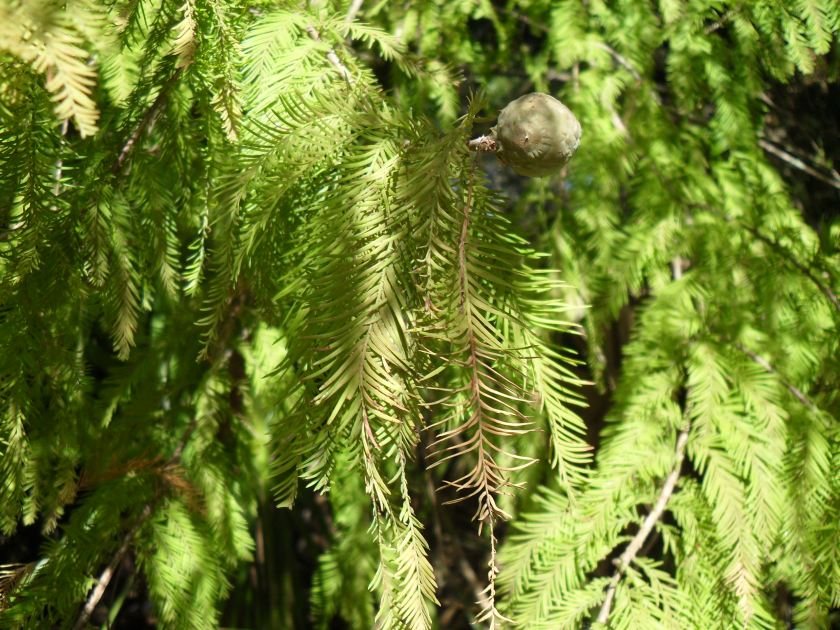 |
| 2 |
Indian Blood Peach
This heavy producer of good quality, white streaked with red fleshed peach holds well for canning and preserving. The Indian Blood peach is a zone 4 peach tree of the large red skinned clingstone variety that ripens August to September. The Indian Blood Peach tree does best with a pollinator and needs 900 chill hours. Grows in zones: 4 - 8 |
Willis Orchards |
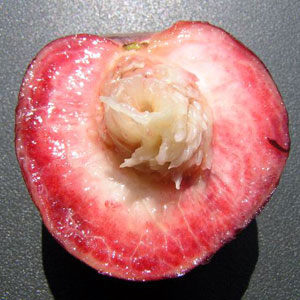 |
| 2 |
Red Baron Peach
The Red Baron Peach Tree is a patented variety of unsurpassed excellence. Not only is the fruit a large, beautiful red, but the tree itself is prized for its large double red blossoms that cover the tree for several weeks in early spring. These delicious 3" diameter fruits ripen over an extended period of time from mid-July to mid-August, and require a low 250 chill hours. |
Willis Orchards |
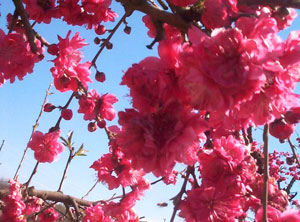 |
| 1 |
20th Century Asian Pear
The 20th Century Asian Pear Tree is an August ripening Japanese variety that is semi-self fertile. It is a medium to large, round yellow-green colored pear of good quality and decent sweet taste. This juicy Asian Pear treat is great eaten fresh and it stores well for canning and preserving. The 20th Century Asian Pear will set a much heavier crop when planted with one of the other Asian pear varieties. Requires 400 chill hours. Will grow in zones 5-9a. Grows in zones: 5 - 9 |
Willis Orchards |
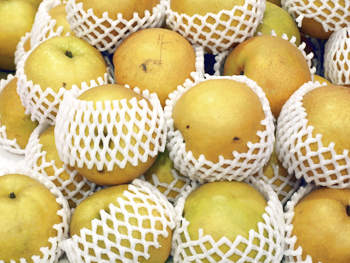 |
| 2 |
Eliza's Choice Crabapple
Eliza's Choice Crabapple Tree is a naturally select cultivar found on a small family farm near McMinnville, TN. This select crabapple tree variety is an excellent pick for wildlife plantings and jelly making. It has beautiful showy white blossoms in Spring and the fruits ripen later than many other varieties. The pictures show Eliza standing by her Choice Crabapple tree loaded with fruit in mid-October. However, the fruits continue to ripen and fall well into November, which makes Eliza's Choice Crabapple a must have for hunting enthusiasts. |
Willis Orchards |
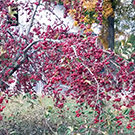 |
| 1 |
Giant Fuyu Persimmon Tree
This is a very large hybrid of the Fuyu Jiro. The Giant Fuyu Persimmon tree also ripens in November and is non-astringent. The fruit is a dark orange color when ripe and has a delicious smooth texture. (100-200 Chill Hours) Grows in zones: 6 - 10 |
Willis Orchards |
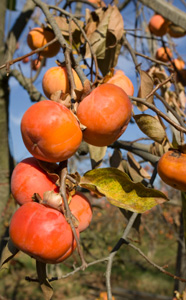 |
| 1 |
Ivory Silk Lilac
Not Your Grandma's Lilac! Looking for something different? The Tree Lilac (Syringa reticulata 'Ivory Silk') is not the flowering shrub you might have seen in grandma’s yard, but a small tree that bears huge (foot- long!) flower panicles in late June, well after other lilacs have given up for the season. The monster flower bunches are creamy white and give off a heady, musky scent that will perfume your entire garden. These trees only get about 25 feet high which makes them perfect for small yards or as a focal point. For an even greater impact, plant several along a fence line – they make a show-stopping tall hedgerow! On top of all this goodness, the Tree Lilac can withstand temperatures as low as 30 degrees below zero and isn’t affected by soil ph like other lilacs. It is the hardiest and most trouble free Lilac available, especially for northern climates. The Tree Lilac blooms more heavily than other Lilac varieties, too. It flowers later in the season, extending your Lilac pleasure. Through the summer your Tree Lilac will be densely covered in beautiful, deep green leaves, a refreshing sight in the height of summer heat. In the fall and winter the attractive, smooth, dark red bark adds an interesting dimension and texture to your landscape. Whether you’re new to lilacs or just want to add something different to your garden, the Tree Lilac is for you. Order yours today! * Huge flowers. * Fragrant blooms. * Cold hardy and trouble free. Don’t Prune Lilacs During Fall or Early Spring |
Nature Hills Nursery |
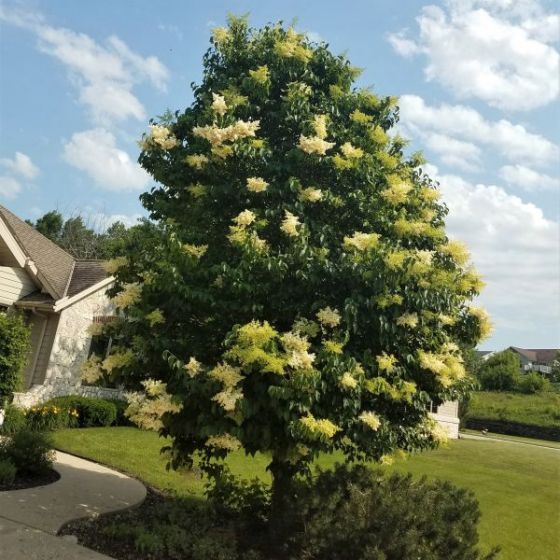 |
| 1 |
Shinseki Pear Tree
An early harvest of delicious Asian Pears on a hardy tree. Nothing beats a crisp easy-to-eat pear straight from the tree during the dog-days of summer. Shinseiki Asian Pear Tree is a beautiful tree that covers itself in loads of round, yellow-skinned pears. The tree is easy to grow and the fruit is oh SO delicious!
You will love these pears if you are a fan of Granny Smith apples over Red Delicious. Crisp, juicy texture and sublimely-sweet flavor are the hallmarks of these pretty fruit.
Since this is one of the earliest Asian pears to ripen available on the market today, you will be enjoying bowls of the yummy fruits weeks before your neighbors.
The tree grows naturally to a lovely conical shape and is covered in flowers in the spring. When the fruit is ripening, it looks like Christmas ornaments hung all over the tree. Young trees will produce up to 100 fruit, while 6-7 year old trees produce 500-700 pears each year! |
Nature Hills Nursery |
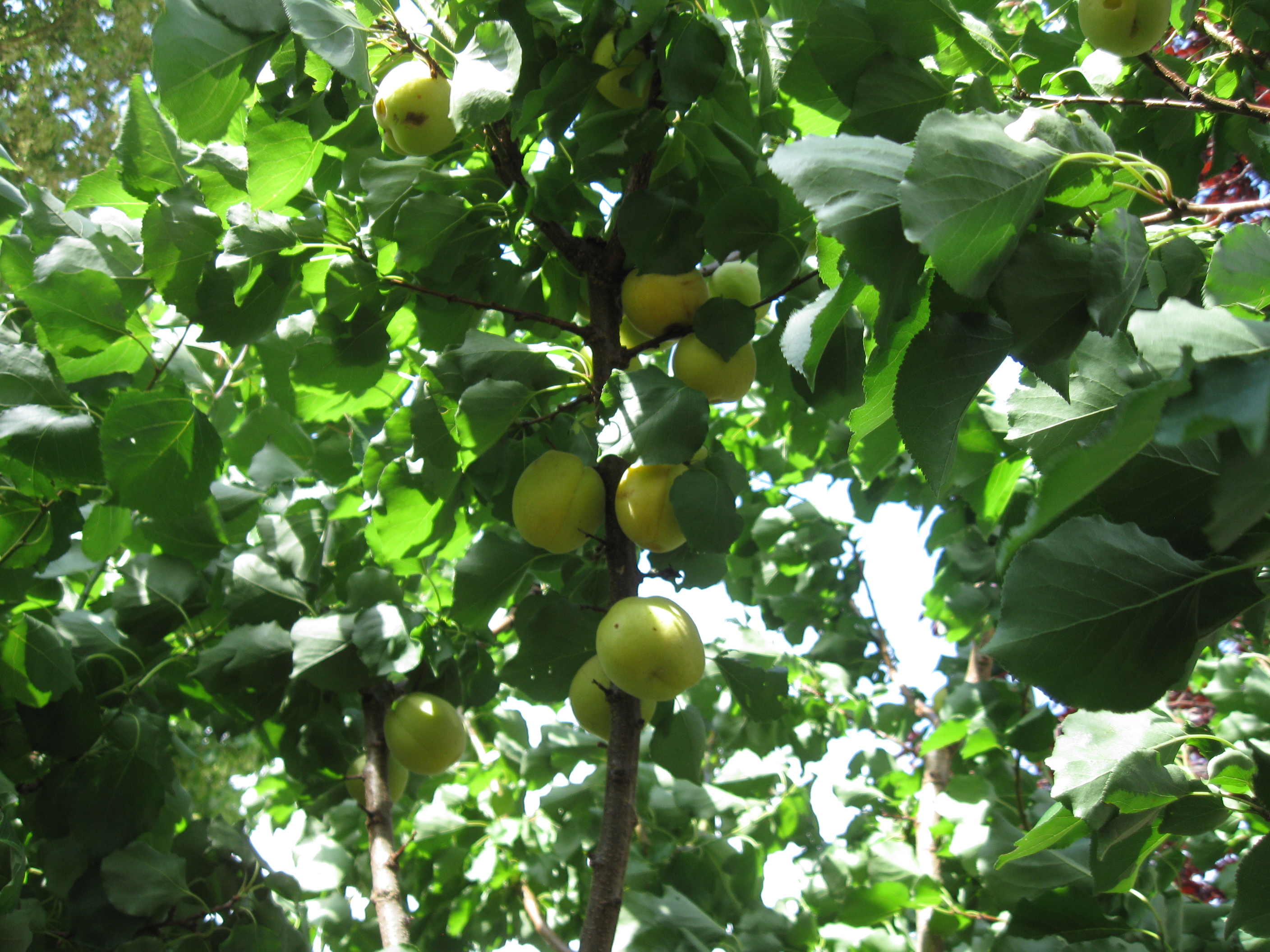 |
| 1 |
Falvor Supreme Pluot
Supreme Sweetness in a Gorgeous Fruit Pluots are an all-around great fruit and one of the best fruit tastes in all the world. In a field of amazingly sweet fruits, Flavor Supreme Pluot, Prunus 'Flavor Supreme', raises to the top with award after award for its taste. It’s like picking a winning diamond from a field of diamonds. You can’t go wrong with any pluot, but you will be very happy with the Supreme. It looks different than you’d expect – smooth, mottled-green skin with firm, juicy wine-red flesh. But don’t let the look fool you. These pluots marry the best of both plums and apricots and this brings out the sweetest taste imaginable. The tree itself has a classic shape and beautiful Japanese plum-like leaves. It makes a pretty landscape tree in your yard. A pretty tree with a bonus - you’ll have plenty of fruit to eat and an abundance to share with your friends and neighbors. Flavor Supreme needs a pollinator so order two. Or you can plant it with a Japanese plum like Beauty Plum or another pluot, like Flavor Grenade or Flavor King. Order a couple of these beauties today and enjoy this supremely sweet fruit next year. You’ll thank us! * Winter hardy * Super-sweet taste * Early harvest |
Nature Hills Nursery |
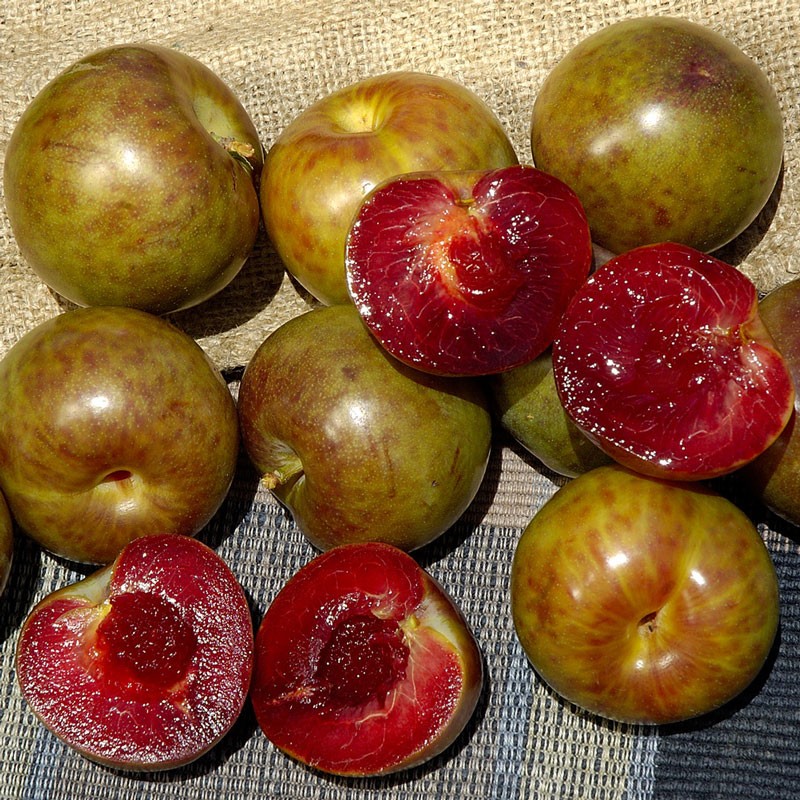 | |
|
Blog Home
|
|
|
|